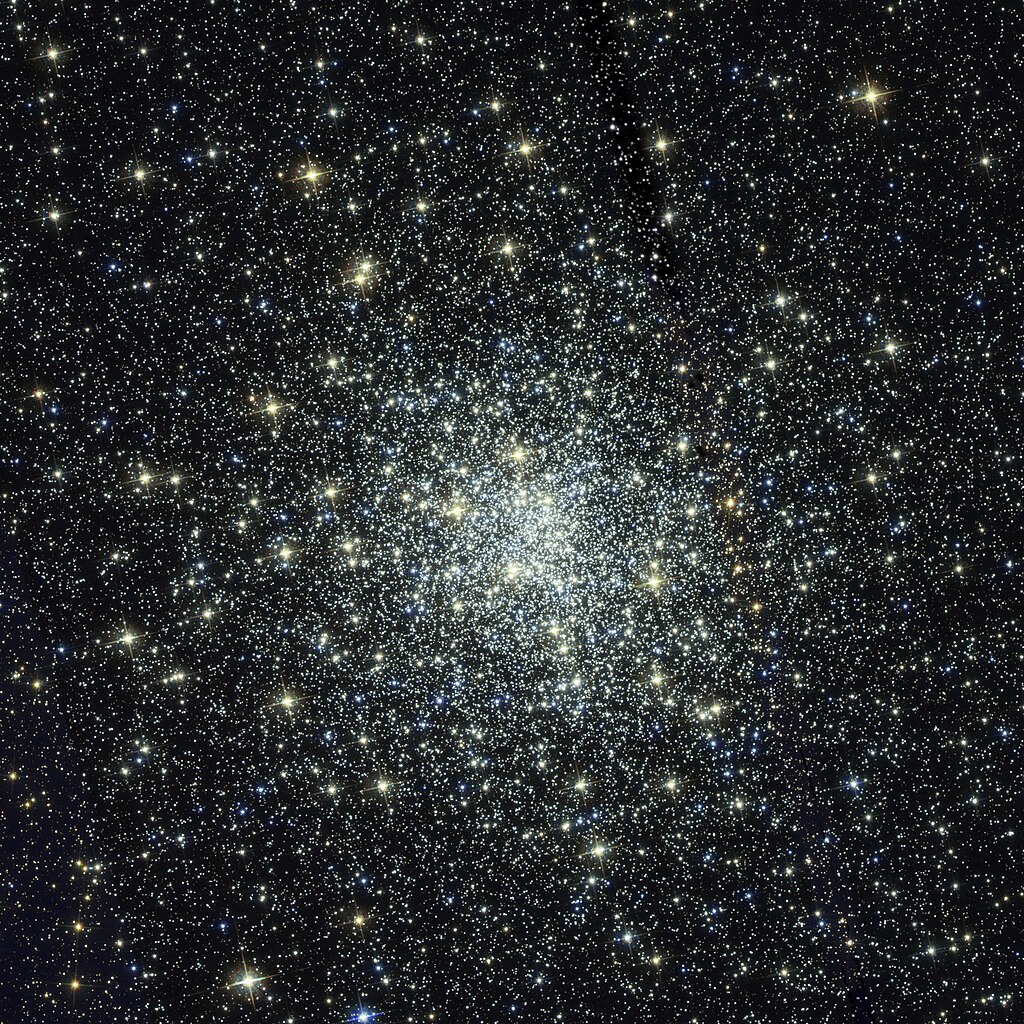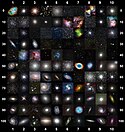M28 - HST-U-V-IR
Messier 28
M28 is a globular cluster located 17,900 light-years away from Earth in the constellation Sagittarius. It was discovered by Charles Messier in 1764. With an apparent magnitude of 7.7, the cluster appears as a faint patch of light through a pair of binoculars. Large telescopes can resolve its individual stars more effectively. The month of August is the best time to view M28.
The cluster is most notable for being the first of its kind known to contain a millisecond pulsar: PSR B1821–24. This dense neutron star rotates rapidly (about once every three milliseconds) and emits radiation from its poles, which sweeps past Earth as the star spins, much like a beam of light from a lighthouse. This makes it appear to be pulsing to observers on Earth. PSR B1821–24 was discovered in 1986 using a radio telescope in England called the Lovell Telescope.
This Hubble image of M28’s center was assembled from observations taken at visible, infrared and ultraviolet wavelengths.| Diese Datei ist gemeinfrei (public domain), da sie von der NASA erstellt worden ist. Die NASA-Urheberrechtsrichtlinie besagt, dass „NASA-Material nicht durch Urheberrecht geschützt ist, wenn es nicht anders angegeben ist“. (NASA-Urheberrechtsrichtlinie-Seite oder JPL Image Use Policy). |  | |
 |
Warnung:
|
Relevante Bilder
Relevante Artikel
Messier 28Messier 28 ist ein +7,66 mag heller Kugelsternhaufen mit einer Flächenausdehnung von 11,2' im Sternbild Schütze. Er ist rund 18.000 Lichtjahre vom Sonnensystem entfernt und hat einen Durchmesser von etwa 60 Lichtjahren. .. weiterlesen

